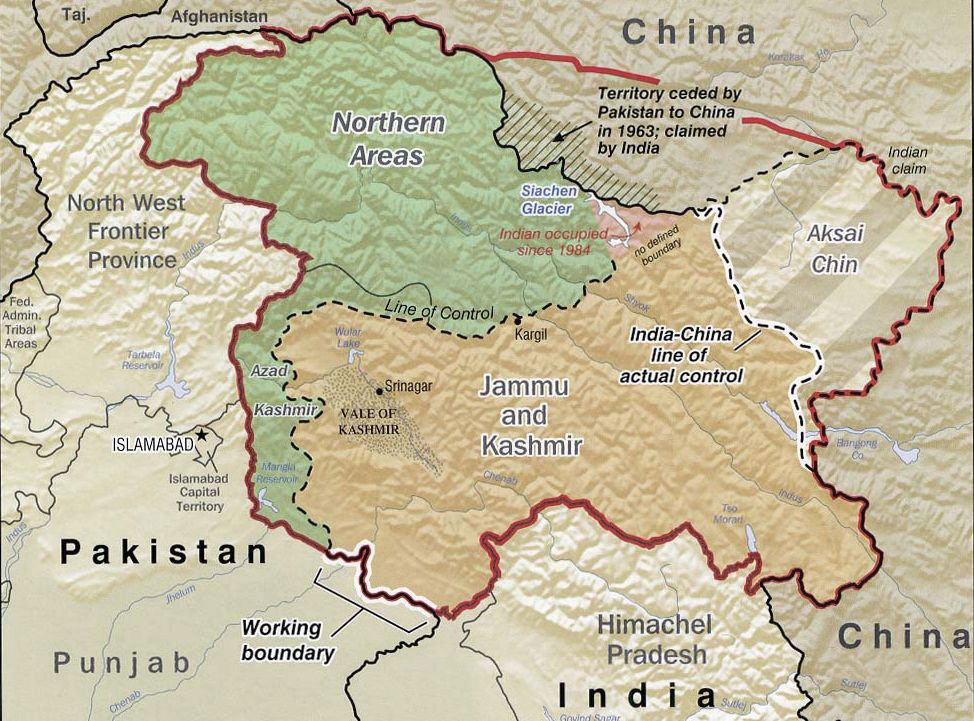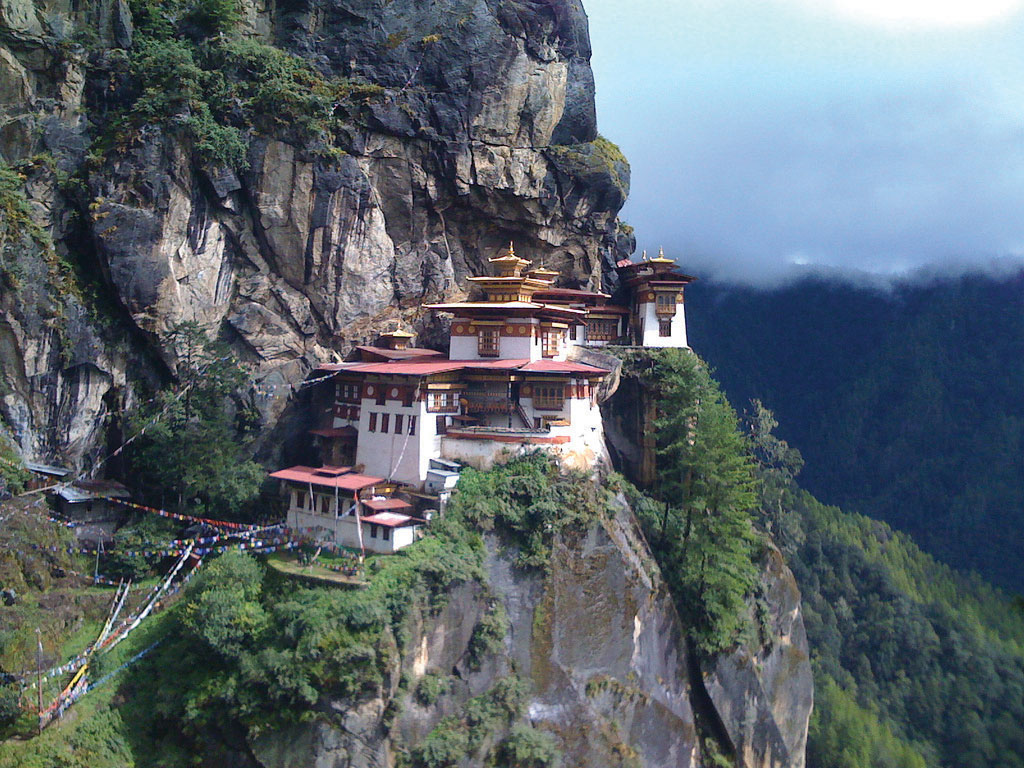South Asia
3.6 Peripheral States of South Asia
The Indian subcontinent is a vast landmass extending into the Indian Ocean on the southern side of Asia, bordered by Afghanistan, Myanmar (also known as Burma), and China to the north. It includes the southern nations of the Maldives and Sri Lanka, as well as the northern regions of Punjab, Kashmir, Nepal, and Bhutan. This region has a rich tectonic history shaped by the collision of the Indian Tectonic Plate with the Eurasian Plate, which created the towering Himalayan Mountain ranges in the north and northwest.
The Karakoram Mountains lie in northern Pakistan and Kashmir, forming part of an arc of Himalayan ranges that stretches across South Asia’s northern border. Nepal and Bhutan are nestled within the Himalayas, home to some of the highest peaks, like Mount Everest (on the Nepal-China border) and K2 (in Pakistan). The Hindu Kush mountains, located in western Pakistan and Afghanistan, add to the region’s rugged terrain. The Indus River originates in the Karakoram mountains, creating a fertile floodplain. Its northern tributaries form the five rivers of the Punjab region, which spans Pakistan and India, with “Punjab” meaning “land of the five rivers” in Punjabi.
Punjab
Punjab is a fertile agricultural region with a high population density, located along the border of India and Pakistan. It spans areas in both countries, with abundant fresh water and rich food production contributing to its dense population. Punjab is the most densely populated region in Pakistan, while India has a separate state called Punjab. The river valleys in this region are crucial for agriculture and play a vital role in feeding both nations.
Punjabi people live in the Punjab State of India and the Punjab Province of Pakistan. This culturally rich region was divided into two countries during the Partition in 1947, when India gained independence, and Pakistan was created. Punjabi, an Indo-European language, is widely spoken here. Punjabis are one of South Asia’s main ethnic groups, making up about 45 percent of Pakistan’s population. In Pakistan, they are traditionally farmers and warriors, now also associated with agriculture and military professions. Most Pakistani Punjabis are Muslim, with a Christian minority. In India, Punjabis belong to diverse traditional groups, mostly Sikhs, with a Christian minority as well, following the migration of Muslims to Pakistan in 1947.
The Punjab region of both countries is the homeland of Sikhs, followers of a distinct religion that differs from Islam and Hinduism. Sikhism, founded by Guru Nanak Dev (1469–1538), rejects distinctions based on caste, creed, race, or gender. It emphasizes equality and personal responsibility for leading a moral life, with no priestly class in its practices.
Kashmir
In the northern high mountains lies the former Kingdom of Kashmir, an independent realm before British rule reshaped South Asia. In 1947, as the British drew the border between India and Pakistan, Kashmir’s Maharajah opted for independence instead of aligning with either nation. At that time, around 75 percent of the population was Muslim, while the rest, including the Maharajah, were predominantly Hindu. This delicate balance held for a while until the Muslim majority, backed by Pakistan, pushed to join Pakistan. After a Muslim-led uprising, the Maharajah sought military aid from India, which seized the chance to counter Pakistan. Today, Kashmir is divided, with Pakistan controlling the northern part, India holding the southern region, and China occupying a slice of the east. Although a cease-fire exists, sporadic clashes persist, and Kashmir’s future remains uncertain, as none of the nations involved are willing to trigger a large-scale war given their nuclear capabilities.

Pakistan controls the northern areas, India governs the Jammu and Kashmir region, and China oversees the eastern portion, known as Aksai Chin. All three nations possess nuclear weapons, but it’s apparent none of them wishes to initiate a nuclear war.
The Kashmir conflict revolves around its strategic location and water resources rather than labor or materials. While it’s uncertain whether the mountains in Kashmir contain abundant minerals, mining activity is minimal and does not appear to be a source of conflict. Water is a key geographic factor, with the Indus River flowing through Kashmir from Tibet into Pakistan. Controlling this river system is crucial for the people in northern Pakistan. If India were to dam the river and redirect the water to its drier southern regions, Pakistan could face water shortages in the north. Another element of the conflict is the division between Pakistan and India, which originally split Muslims and Hindus along the border. Religious differences have resurfaced in the struggle for Kashmir, with extremist Muslim movements within the region intensifying the divide between those who support Pakistan and those aligned with Hindu-majority India.
Bhutan
Nestled high in the eastern Himalayas, the Kingdom of Bhutan has long captivated the world with its ethereal landscapes and steadfast commitment to cultural preservation. Shielded from external influences for much of its history, Bhutan was governed by a series of hereditary rulers who maintained a delicate balance between isolation and engagement with neighboring powers. Over time, its people developed a unique national identity grounded in Vajrayana Buddhism, which remains the state religion and informs nearly every aspect of daily life. The country’s remote geography, characterized by rugged mountains and deep valleys, has fostered a deep respect for nature, reflected in Bhutan’s environmental policies and reverence for the natural world.

In recent decades, Bhutan has gradually opened its doors to modernization, introducing new technologies and infrastructure to connect with the broader global community. Satellite television, mobile networks, and the Internet have transformed the way Bhutanese citizens access information and interact with the world. International airlines now bring a small but steady stream of visitors, thanks to the government’s carefully regulated tourism policy that imposes high daily fees on visitors to limit numbers and protect the nation’s culture and environment. This approach allows Bhutan to benefit economically from tourism while minimizing cultural disruption and ecological harm, ensuring that the country’s traditions and natural beauty remain largely intact.
Bhutan’s approach to development is perhaps best symbolized by its concept of Gross National Happiness (GNH). This holistic framework values the spiritual, social, and environmental well-being of its citizens over mere economic growth. Government policies are crafted to safeguard the country’s unique heritage and promote collective happiness, as seen in bans on tobacco sales and the prioritization of cultural heritage in national planning. Approximately three-quarters of Bhutan’s population practices Buddhism, while Hinduism is followed by most of the remainder, reflecting a diverse yet harmonious society. In recent years, the country has witnessed a peaceful transition toward democracy, marked by regular elections and growing political participation, as it carefully and determinedly embraces change while preserving Bhutan’s cherished way of life.
Kingdom of Nepal
Nepal, a country situated next to the Himalayas, is a landlocked nation bordered by India and China. Comparable in size to Bangladesh, it has a population of nearly thirty million. Over 80 percent of its population relies on agriculture, but the region faces significant challenges, including deforestation and soil erosion. Trees are cut for building, cooking, and heating, leaving the land vulnerable to monsoon rains that wash the soil from mountain fields into valleys. With a growing population and decreasing agricultural capacity, Nepal is heading toward a potential crisis. The fertile Tarai lowlands in the south are the primary agricultural area, while the mountainous north is less habitable due to its extreme elevations. In recent years, population growth has outpaced the country’s economic progress.
Nepal is rich in tourist attractions, with Mount Everest being the most famous. The country is home to countless ancient temples and monasteries, as well as swift rivers and rugged mountain terrain that support a growing trekking industry. Visitors can experience a vibrant culture rarely seen by outsiders. However, tourism requires investments in infrastructure and services, which can divert funds from essential needs, such as schools, clinics, and public services for the Nepalese people. While tourism income is vital and appreciated, balancing these investments is a challenging task. Unlike Bhutan, Nepal’s tourism is less restrictive, and its stunning physical and cultural landscapes continue to draw travelers from around the world.
Hinduism is Nepal’s primary religion, although Buddhism is widely practiced in the northern parts of the country. The guardian deity of Nepal is Shiva, and the Pashupatinath Temple in Kathmandu is the most significant site for Shiva worship. This UNESCO World Heritage Site is a key destination for Hindu pilgrims globally. In Nepal, Buddhist and Hindu beliefs often intertwine, with shared deities and temples honored by both religions.
Another UNESCO World Heritage Site in Nepal is Lumbini, located near Bhairahawa (Siddharthanagar) on the Indian border and is known as the birthplace of Siddhartha Gautama, the founder of Buddhism. Born around 563 BCE near Lumbini, Prince Siddhartha is honored with numerous monasteries and temples, while commercial development in the area is prohibited. Each branch of Buddhism has designated sections within the zone, making Lumbini a major pilgrimage destination.
Sri Lanka
Sri Lanka is a stunning island, about half the size of Nepal, with a warm, tropical climate. The central region is covered in forested hills and mountains, with rivers flowing outward to irrigate rice fields and other crops. The most fertile farmland is located in the southwestern areas under Sinhalese control. Native cinnamon has been cultivated since colonial times as a key export alongside coconuts, coffee, and tea. The island features national parks, biosphere reserves, and wild elephant herds. With its potential for high-income tourism and international trade, Sri Lanka has the opportunity to thrive. Still, challenges tied to colonialism and ethnic divisions between the Sinhalese majority and Tamil minority hinder its progress.
The people of South Asia practice a variety of religions. Pakistan and Bangladesh are predominantly Muslim, while India has a Hindu majority. Around 90 percent of Nepal’s population is Hindu, though many follow a unique blend of Hindu and Buddhist traditions. Bhutan, a small, mystical mountain kingdom, is primarily Buddhist. Sri Lanka has a complex mix of a Buddhist majority and a significant Hindu minority. Religious, ethnic, and political differences have often caused tensions, including a decades-long civil war fueled by conflicts between the majority and minority ethnic groups.
The Sinhalese people migrated from northern India to Sri Lanka about 2,500 years ago, bringing Buddhism and the Sinhala language, which is part of the Indo-European language family. Over centuries, they established their presence on the island. Portugal first colonized Sri Lanka, then the Dutch, and later the British, who renamed it Ceylon. In 1972, Ceylon became Sri Lanka. The central highlands, ideal for tea production, attracted the British, who established tea plantations and brought thousands of Tamil laborers from southern India across the Polk Strait to work them. The Tamil people, who speak a Dravidian language and follow Hinduism, settled on the island.
When the British left South Asia, the Tamils remained in Sri Lanka, now comprising approximately 10 percent of the population, primarily in the northeastern region. They have long sought political separation and independence from the Sinhalese majority. This led to a prolonged civil war between the Tamil Tigers, an insurgent group, and the Sinhalese government, resulting in the deaths of 60,000 to 80,000 people.
The Maldives
Located just north of the Equator in the Indian Ocean, southwest of India, the Maldives is a group of low-lying islands comprising 26 atolls that cover approximately 115 square miles. These atolls comprise approximately 1,200 small islands, with around 200 of them inhabited. The Maldives was under Portuguese control from 1558, followed by Dutch rule in 1654. It became a British protectorate in 1887, gained independence in 1965, and transitioned into a republic three years later. As Asia’s smallest nation in both size and population, with a predominantly Muslim population, it also holds the distinction of having the world’s lowest average elevation at roughly five feet above sea level.
Maldivians primarily rely on fishing and tourism for their livelihoods. Tourism has flourished since 1972, when the first resort opened, and now dozens of luxury resorts operate across the islands. Tourism is the country’s primary source of income, with its coral reefs being ideal for diving, its tropical weather, and stunning beaches attracting visitors from around the world.
The Maldives faces a significant threat from climate change, as rising sea levels due to melting polar ice could render the islands uninhabitable. In 2008, the Maldivian president proposed purchasing land in other countries, using tourism revenue, to provide a haven for its people in the event of evacuation becoming necessary. The government has actively worked to raise international awareness about this pressing issue.

